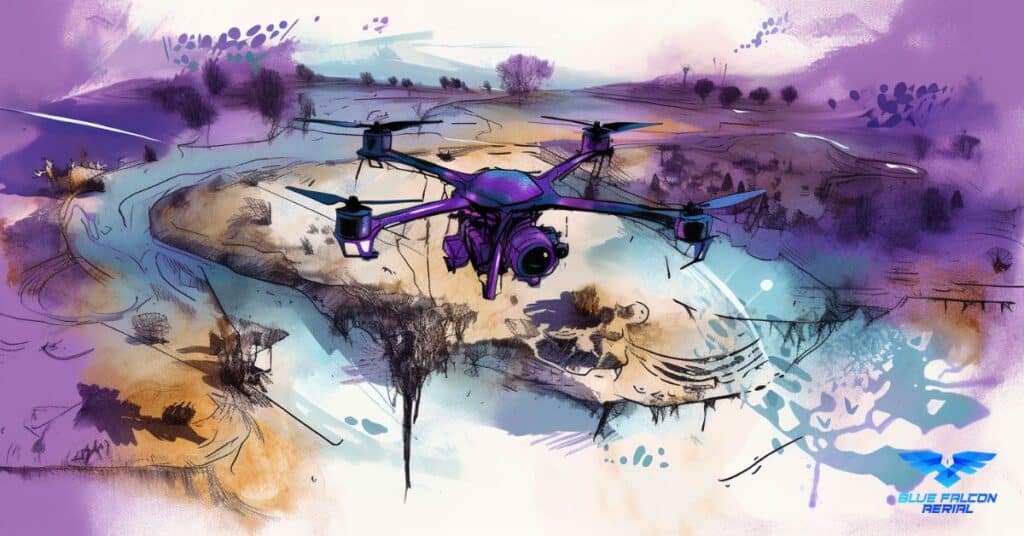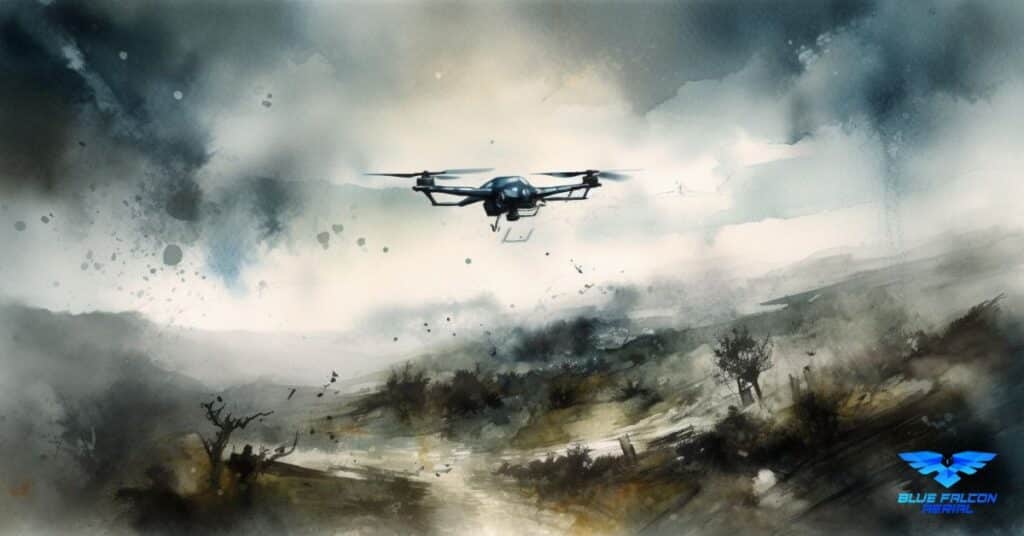When every second counts, innovative solutions are crucial in saving lives. One such innovation that has transformed the emergency response landscape is the integration of drone aided emergency response. These unmanned aerial vehicles (UAVs) are increasingly being utilized to enhance response times, improve situational awareness, and ensure the safety of first responders. In this article, we will explore various emergency scenarios where drones have proven their value, examine the technologies and equipment that enable their life-saving capabilities, and discuss the challenges and future developments in this rapidly evolving field.
Types of Emergencies Benefiting from Drone Aided Emergency Response
Drones have become invaluable tools in various emergency situations, proving their worth in life-saving missions. Some of the most common emergency scenarios where drones have demonstrated their effectiveness include:
Natural Disasters
In the aftermath of natural disasters, such as earthquakes, floods, and hurricanes, drones can quickly assess the extent of damage, locate victims, and identify safe routes for rescue and relief operations. With their aerial perspective, they can cover large areas and access hard-to-reach locations, making them indispensable tools in disaster response efforts.
Medical Emergencies
Drones are increasingly being used to deliver critical medical supplies and equipment, such as defibrillators, blood products, and medications, to remote or congested areas. This can significantly reduce response times and ensure that patients receive life-saving interventions more quickly.
Search and Rescue Operations
In search and rescue missions, drones equipped with high-resolution cameras, thermal imaging, and GPS technology can rapidly locate missing persons, even in challenging terrain or adverse weather conditions. This can expedite the search process and improve the chances of a successful rescue.
Firefighting
Drones have become valuable assets for firefighters, as they can provide real-time aerial data on the size, location, and progression of fires. This information enables firefighters to make informed decisions, allocate resources more effectively, and ultimately save lives and property.
Hazardous Materials Incidents
In situations involving hazardous materials, drones can be deployed to assess the scene, identify the type and extent of contamination, and monitor air quality, all while keeping first responders at a safe distance.
Advantages of Drone Aided Emergency Response
The use of drones in emergency response scenarios offers numerous benefits that can significantly improve the outcomes of life-saving operations. Some of the most notable advantages include:
Faster Response Times
Drones can be deployed quickly and easily, allowing emergency response teams to gather crucial information in a matter of minutes. This can result in faster decision-making, more efficient resource allocation, and ultimately, saved lives.
Enhanced Situational Awareness
With their aerial perspective and advanced imaging capabilities, drones provide first responders with a comprehensive view of the emergency scene. This enhanced situational awareness allows teams to make better-informed decisions and coordinate their efforts more effectively.
Improved Communication and Coordination
Drones equipped with communication devices can facilitate real-time information sharing between various emergency response agencies, ensuring a more cohesive and coordinated response effort.
Greater Operational Safety
By providing remote access to hazardous or hard-to-reach areas, drones can keep first responders out of harm’s way, minimizing the risk of injury or loss of life among emergency personnel.
Technologies and Equipment Used in Drone Aided Emergency Response
The effectiveness of drones in emergency response scenarios is largely due to the advanced technologies and equipment they carry. Some of the most important tools utilized by these aerial assets include:
Thermal Imaging Cameras
Thermal imaging cameras are essential for detecting heat signatures, enabling drones to locate victims, identify hotspots in fires, or detect potential hazards. These cameras can be particularly useful during search and rescue operations, as they can identify individuals even in low-visibility conditions, such as at night or in dense foliage.
High-Resolution Video Cameras
High-resolution video cameras provide real-time, detailed imagery of emergency scenes, improving situational awareness for first responders. These cameras can be invaluable in assessing damage, monitoring the progress of operations, and capturing evidence for further analysis.
Communication Devices
Drones can be equipped with various communication devices, such as radio transmitters and mesh network systems, to facilitate information sharing between emergency response teams. This can significantly improve coordination and decision-making during life-saving missions.
Payload Delivery Systems
Some drones are designed to carry and deliver essential supplies or equipment, such as medical supplies, life vests, or firefighting tools. These payload delivery systems can prove crucial in providing timely assistance to victims or supporting first responders in challenging situations.
Real-World Examples of Drone Aided Emergency Response
Drones have already made a significant impact in various emergency response scenarios around the world. Here are a few noteworthy examples that demonstrate their life-saving potential:
Hurricane Response
Following Hurricane Harvey in 2017, drones were used extensively to assess damage, locate stranded victims, and deliver essential supplies. They proved invaluable in navigating flooded areas and providing crucial information to emergency response teams.
Mountain Rescue
In 2018, a drone equipped with a thermal imaging camera was instrumental in locating a missing hiker in the rugged terrain of the Scottish Highlands. The drone’s ability to quickly scan large areas and detect the hiker’s heat signature led to a successful rescue.
Medical Supply Delivery
In Rwanda, the startup company Zipline uses drones to deliver blood and medical supplies to remote health facilities, significantly reducing delivery times and ensuring that patients receive the care they need more promptly.
Wildfire Monitoring
During the devastating wildfires in California, drones equipped with thermal imaging cameras were used to map the progression of the fires and provide critical information to firefighters, enabling them to allocate resources more effectively and protect lives and property.
Challenges and Future Developments in Drone Aided Emergency Response
While drones have proven to be valuable tools in emergency response scenarios, there are still challenges to overcome and potential developments to look forward to. Some of the key areas to consider include:
Regulatory Challenges
Drones must adhere to strict regulations set by aviation authorities, such as the Federal Aviation Administration (FAA) in the United States. These regulations can sometimes hinder the deployment of drones in emergency situations. However, as the benefits of drone aided emergency response become more evident, it is likely that regulatory bodies will continue to adapt and develop more flexible rules for their use in life-saving missions.
Technical Limitations
Current drone technology has some limitations, such as limited flight time, payload capacity, and operational range. As technology advances, we can expect to see improvements in these areas, leading to even more capable and efficient drones for emergency response.
Data Security and Privacy
With the increasing use of drones in emergency response scenarios, concerns surrounding data security and privacy have emerged. Ensuring the secure transmission and storage of sensitive information, as well as addressing potential privacy issues, will be crucial for the continued success of drone aided emergency response efforts.
Integration with Other Technologies
As drone technology evolves, we can expect to see increased integration with other cutting-edge technologies, such as artificial intelligence (AI), augmented reality (AR), and the Internet of Things (IoT). These advancements will further enhance the capabilities of drones in emergency response scenarios and open up new possibilities for life-saving operations.
Training and Education
As drones become more prevalent in emergency response efforts, it will be crucial to provide adequate training and education for first responders and emergency personnel. This will ensure that drones are used effectively and safely, maximizing their life-saving potential.
In conclusion, drone aided emergency response has the potential to revolutionize the way we respond to emergencies, ultimately saving lives and ensuring the safety of first responders. As drone technology continues to advance, we can expect further improvements in efficiency, communication, and capabilities, making them indispensable tools for emergency response teams worldwide.
If you’re interested in learning more about how drones are transforming various industries, we recommend visiting Aerial LiDAR 101: An Introduction to Its Applications and Benefits to discover the power of aerial data collection. Should you need professional drone services for your organization or project, don’t hesitate to contact Blue Falcon Aerial for top-quality solutions tailored to your specific requirements.




